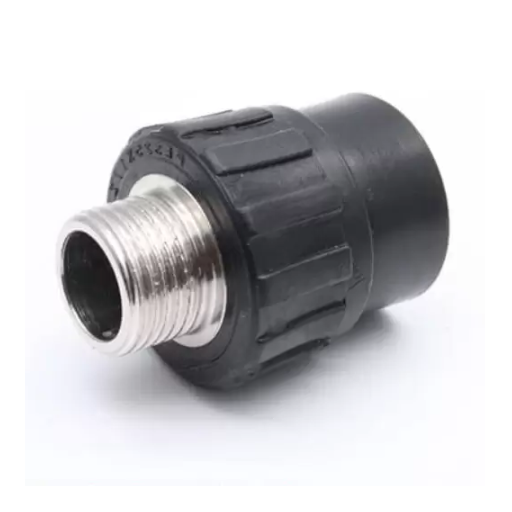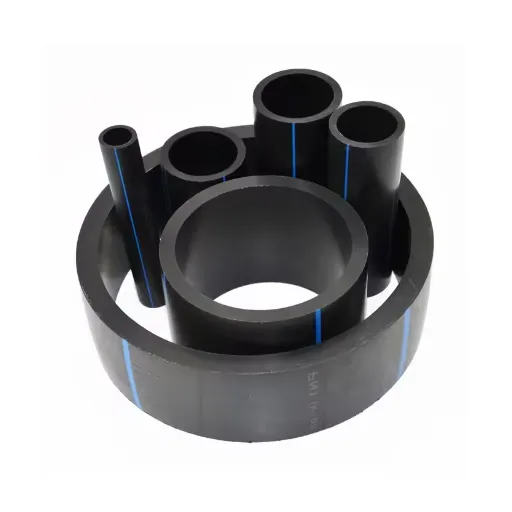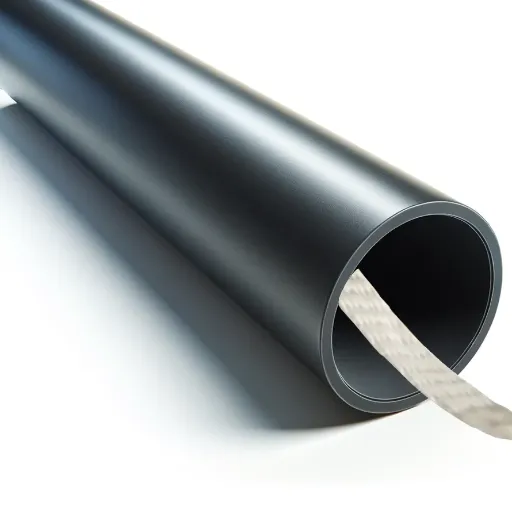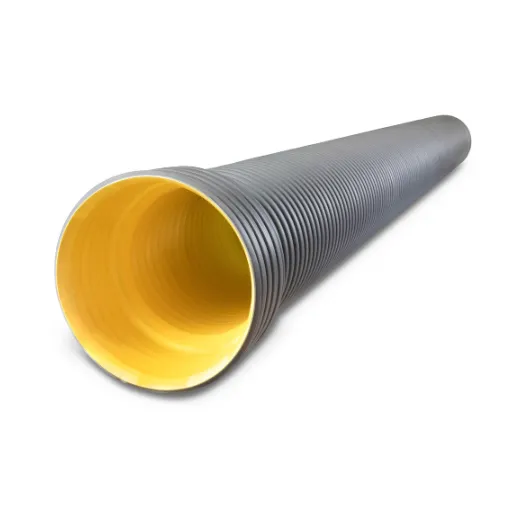High-Density Polyethylene (HDPE) socket male couplers are essential components in modern piping systems, offering exceptional durability, reliability, and versatility. Whether utilized in water supply networks, gas pipelines, or industrial applications, these connectors play a crucial role in ensuring secure and efficient jointing of pipes. This article dives deep into the key features that make HDPE socket male couplers a preferred choice, explores their wide-ranging applications across various industries, and provides detailed installation tips for optimal performance. By the end of this guide, you’ll gain a comprehensive understanding of these fittings and how they can streamline your next piping project.
Introduction to HDPE Socket Male Couplers
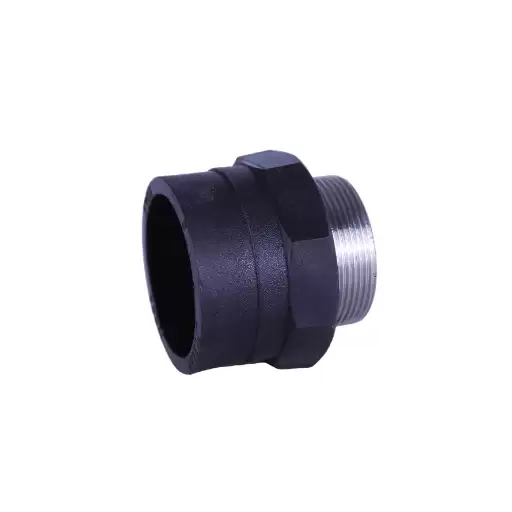
What is an HDPE Socket Male Coupler?
An HDPE socket male coupler is a special-purpose pipe fitting that securely connects two pipe sections. It thus has a male-threaded end that mates with a female-threaded fitting to ensure a sealed, leak-free connection. The socket design allows for accurate alignment, making it ideal for joining HDPE pipes without compromising the pipe’s strength.
These couplers are very much preferred due to their durability, corrosion resistance, ability to withstand deep pressure, and severe environmental conditions. The couplers are made from a thermoplastic material called HDPE, which possesses a high strength-to-density ratio and is lightweight but robust. This makes them applicable to water supply systems, gas distribution networks, irrigation setups, and industrial fluid transfer, among others.
They bear an installation ease, along with the possibility of their reinstallation. HDPE socket male couplers are manufactured to not need complicated tools or welding processes; their assembly envisages fitting under less installation time and labor costs. This approach adds flexibility since it can accept slight misalignments between pipes. Their performance and dependability elevate them as one of the key players in the modern piping mechanisms.
Structure and Key Features
HDPE socket male couplers are designed with a structured build for strength and to allow leak-proof connections between the threaded male end and smooth internal socket. The threaded portion conforms to industrial standards so that it will fit a variety of pipelines. The socket design is strengthened based on operational pressure, allowing these couplers to be used in potable and non-potable water systems.
One key characteristic that makes the couplers worth buying is chemical corrosion resistance. The HDPE material shows a great ability to stay intact in environments that include exposure to harsh chemicals, UV radiation, and moisture. These properties extend the operational life of the couplers and therefore reduce their maintenance cost over time in industries, farming, or municipal applications.
Another noteworthy feature, HDPE is its thermal flexibility. The couplers maintain their structural integrity over a wide range of temperatures and are thus dependable when utilized in extreme weather conditions. With the design facilitating easy installation in tight spaces, repairs or expansions to the water supply system require minimal interference. These features combine to render HDPE socket male couplers influential in guaranteeing maximum efficiency and durability of piping.
Advantages of Using HDPE Couplers
- High Durability and Strength: HDPE couplers resist external pressures, impacts, and abrasions, and thus find application in harsh environments. They operate at maximum working pressures of about 16 bars, and they are tested to work for cumulative hours of time without degradation.
- Corrosion and Chemical Resistivity: HDPE couplers differ from metal couplers in that they are intrinsically resistant to corrosion and many industrial chemicals, including acids, alkalis, and solvents. This ensures the integrity of the system when subjected to chemically aggressive environments, reducing the need for maintenance.
- Wide Temperature Range Compatibility: HDPE couplers can work for a wide range of temperatures between approximately -40°F to 140°F (-40°C to 60°C). This makes them an excellent choice in very cold or hot climates and ensures they continue to perform, not losing their performance to cracking or warping.
- Lightweight and Flexible Design: The weight of the couplers is significantly less than that of any conventional material like metal, making transportation and installation easier and less costly. Also, the flexibility in HDPE can absorb ground movement or thermal expansion to a certain extent, thereby lessening the chances of failure of the piping system.
- Environmentally Friendly and Recyclable Material: Being a recyclable stretch, HDPE is a worthy material in the environment. HDPE couplers reduce the carbon footprint of piping systems and support the modern trends for eco-friendly infrastructure development.
This is why HDPE couplers must be regarded as a solution for any strong, cost-efficient, and sustainable piping system.
Applications Across Industries
Irrigation Systems
These couplers are the epitome of durability and efficient sustainability, with modernization needing consideration in irrigation. These couplers provide leak-proof zones for landscapes-where water distribution is paramount in crop growth. With resistance to corrosion, HDPE remains in service even during simultaneous fertilization and application of pesticides or in cases of varied soil compositions.
The base flexibility of HDPE materials makes them suited to terrains that have an irregular geographical profile and thus eases installation and reduces maintenance activities. According to data from the industry, the life span of HDPE piping systems is estimated to be over 50 years, thereby making them a long-term economic solution for huge irrigation projects. HDPE couplers conserve water by limiting water loss through leakages and cutting down on operational costs, which is a big plus from the frequently espoused green agricultural practices.
This combination of strength and green performance makes HDPE couplers a must-have in irrigation infrastructure to provide a steady spine for water management so as to support agriculture in varied environments.
Plumbing Applications
HDPE couplers have important uses in plumbing systems, where strength, flexibility, and leak-proof connections are necessary. The properties of these couplers make them very effective in residential and commercial plumbing infrastructure. Below are five fully described ways in which these HDPE couplers apply to plumbing:
- Potable Water Distribution Systems: Because an HDPE coupler is nontoxic and corrosion-resistant, it is widely used in water distribution works. The causes of chemical reactions it is resistant to preserving the water quality and long-lasting are all consistent with NSF/ANSI standards for water safety.
- Underground Water Supply Lines: The couplers are suitable for installation underground because they can bear the soil pressure and environmental changes such as moisture or temperature fluctuation in order that those factors do not demote their performance in the long run service without ever asking for maintenance.
- Drainage and Wastewater Systems: HDPE couplers unite the pipes of drainage and wastewater systems, given their ability to sustain very high rates of flow without clogging, and to withstand chemical and biological wastes without degrading.
- Fire Suppression Systems: During fire suppression activities, HDPE couplers maintain the water and fire retardant delivery systems at high pressures and high reliability. This durability under high pressure and heat exposure is all-important during the emergency application.
- Industrial Plumbing Systems: Within industrial setups, HDPE couplers serve to move chemicals, hot water, and industrial fluids of various kinds. Against all odds, including extreme temperatures and chemical abrasion, these couplers maintain the system-in-place, even when the other hands might have given way in the most severe operating conditions.
The variety of applications speaks volumes about the ability of HDPE couplers to perform under different plumbing systems, confirming their role in tremendous water management.
Industrial Systems
These industrial systems are HDPE coupler-entry due to their working durability, high adaptability, and efficacy in complex applications. Ideal for use in high-pressure piping systems for the transportation of gaseous substances, oils, and corrosive chemicals, shall achieve low failure rates from impact resistance and joint integrity. In addition, these couplers also exhibit low frictional resistance, thereby reducing power losses during fluid transportation, a factor of utmost importance in bulk industrial operations.
Among newer developments in HDPE production, reinforced pipes have been designed to withstand operating pressures of 25 bar, which makes them good for high-pressure circumstances seen in mining, chemical processing plants, and power-generation systems. In addition, their weather-, strength-, and thermal-withstanding temperature ranges from -40°F to 140°F assure performance levels even in extremely harsh climates. With the full recycling ability presented in tandem with environmentally friendly or green elements, HDPE couplers bear significance toward a sustainable environment by cutting down on the carbon footprint of industrial infrastructure projects.
Use of HDPE technology and modern inventions shows that the industrial design approach is forward-thinking and aims for long-term efficiency and resilience.
Manufacturing Process of HDPE Socket Male Couplers
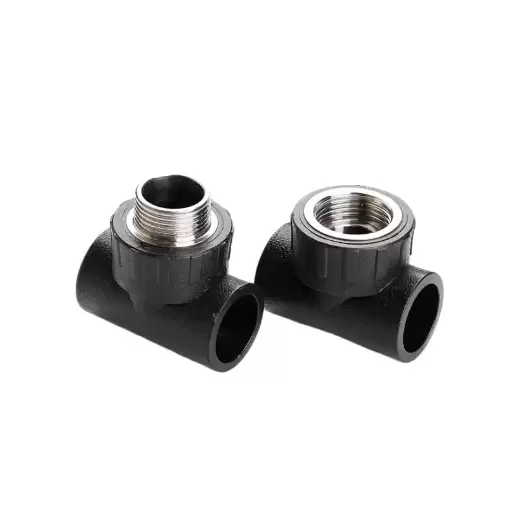
Materials Used: High-Density Polyethylene
High-Density Polyethylene (HDPE) is a thermoplastic polymer that is generally known for its lovely balance of toughness and flexibility for socket male couplers against chemical resistance. The catalytic process is done on petroleum to make HDPE; therefore, the polymer includes tensile strength and the ability to withstand corrosive elements. This feature stands for the great serviceability of the polymer in different industries subjected to high-pressure environments or harsh chemical exposures.
The exceptional rigidity and anti-deformability against thermal or mechanical stress characterize HDPE, being subjected to minimum molecular branching and maximum packing of the molecules in its molecular structure. The density of this kind of material varies between 0.93 and 0.97 g/cm³, greatly augmenting impact and abrasion resistance. These specifications are important for items such as socket male couplers that are required to perform equally under different environmental conditions and last for a long time. Further, HDPE with a melting point generally from 130°C to 137°C assures thermal stability during its processing and in long periods of operation.
Additionally, HDPE is considered greener due to its recyclability and low energy input during its manufacture, vis-à-vis other polymer materials. The study indicates that lifecycle carbon emissions tied to HDPE are significantly lower, particularly when the method of manufacture exploits techniques that maximize material usage and minimize wastage. These features, in concert with industrial infrastructure projects oriented toward sustainability and resource-efficient designs, offer a complete solution for both functional and environmental objectives.
Precision Techniques in Production
For me, precision methods in production imply an advanced set of techniques used to increase efficiency, reduce waste, and improve overall quality. Under the permission of the industrial processes of computer-aided design (CAD) and computer-aided manufacturing (CAM), such systems use material requirements calculations and then ensure their implementation in an optimized manner throughout the manufacturing cycle. Hence, these systems not only add accuracy to production but also seem to actively minimize wastage of resources, thereby supporting the ends of sustainability in manufacturing.
At the same time, the integration of automation, comprising robotics and predictive analytics, has made the production pipeline more streamlined. Machines are capable of performing repeatable tasks with accuracy beyond human ability, thus reducing manual errors to maximize throughput. Predictive analytics works in the place of the manufacturer by making predictions of inefficiencies or disruptions, enabling them to remedy the situation beforehand. This hybridization of mechanical precision and data-based decision-making produces a manufacturing landscape that is able to adapt with ease and is subject to ceaseless optimization.
Lastly, such methods become more efficacious when integrated with sustainability approaches. Precision in production essentially means less waste. Waste in terms of extra raw materials or energy use, to be very specific. Advanced recycling technologies have an unquestionable instrumental role in increasing this advantage by ensuring the reinsertion of the unavoidable byproducts back into their lifecycles. Together, these principles will therefore accelerate industrial performance while heavily contributing toward global objectives on carbon emission reductions.
Quality Assurance in Manufacturing
In manufacturing, quality assurance entails a systematic procedure to ensure that, at all times, products fulfill predetermined standards and customer expectations. Quality assurance incorporates a variety of approaches, such as statistical process control (SPC), total quality management (TQM), and ISO-certified processes. These tools aim to reduce defects, minimize operational wastage, and deliver products that are dependable to the market.
The adoption of state-of-the-art techniques, including machine learning and real-time data analytics, comprises an important layer in QA implementation. Such procedures allow quality to be predicted via sensors and algorithms that will detect faults emerging along the production line before they go from small occurrences to serious downtime and expensive rework. Further, an inspection setup, driven by AI, allows the detection of minute imperfections that a human inspector may overlook.
This involves inspection for technical elements, supplier quality management as well; having stringent selection standards for suppliers, continuing to audit them for maintaining raw material standards for the production would result in end-to-end consistency. By bringing these technical advances and methods into force, manufacturing can improve yield rate, promote regulatory compliance, and gain customer trust amidst mounting production challenges.
Installation Tips for HDPE Socket Male Couplers
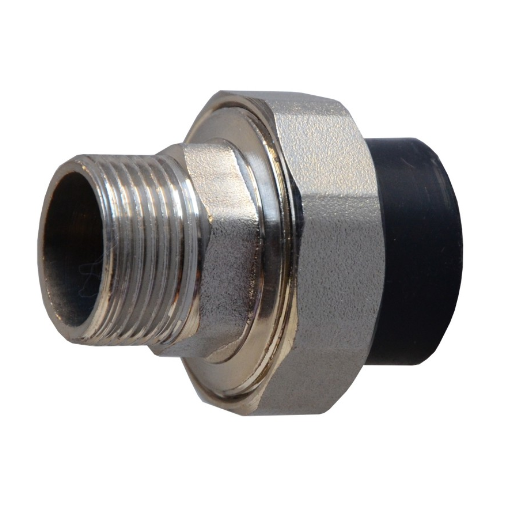
Step-by-Step Installation Guide
- Prepare the Workspace: The installation area should be kept clean, dry, and free of debris. It is always wise to check the HDPE Socket Male Couplers for any damage or manufacturing defects, as this could compromise the connection’s integrity. Confirm that all tools and materials are at hand, including the pipe cutter, deburring tool, heating equipment, and gloves.
- Measure and Cut the Pipe: Make an accurate measurement of the length of the pipe needed, considering the insertion depth of the pipe into the coupler. Cut with a pipe cutter, making sure the cut is clean and square to maintain alignment. Smooth off any burrs or jagged edges using a deburring tool.
- Clean the Surfaces: The outside surface of the pipe and the inside surface of the coupler should be cleaned thoroughly. Any contaminants, such as grease, moisture, or dust, can hinder sealing performance and long-term reliability.
- Heating the Ends and the Socket: To heat the molten ends and the socket simultaneously, follow all manufacturer’s guidelines to prevent any deformation or any weak joints caused by exposure to temperature variations or time. Check the industry’s HDPE heat table for temperature controls. For example, the HDPE materials may usually be heated between 472°F (244°C) and 500°F (260°C).
- Joining the Pipe and Coupler: Just after heating, immediately position the pipe and coupler tightly without any gaps. Insert the pipe into the socket of the coupler under steady pressure to spread evenly the joining force. Avoid any rotation as this will disturb the heat fusion.
- Cool Down Maintain: Maintain the uncooling atmosphere for fusion upon lack of artificially generated means, like water or a fan. This cooling is crucial for the formation of a structurally sound fusion bond.
- Inspect the Connection: After cooling, visually check the joint for inconsistencies such as gaps, misalignment, or deformation. Have a pull test done according to the installation requirements. Subject the joint to quality assurance tests to ensure it passes before moving on to further work.
If all these steps and modern tools are employed, the HDPE Socket Male Couplers can be assuredly installed for optimal efficiency and long-lasting strength under various applications.
Best Practices for a Proper Fit
Attention to both technique and environmental considerations is needed to attain a proper fit with HDPE Socket Male Couplers. First of all, ensure that the pipe ends are cleaned and free from all foreign materials, such as dirt, grease, moisture, and impurities, which may interfere with the adhesion during welding. The edge of the pipe must be suitably bevelled at the angle recommended using a chamfering tool that would allow it to be aligned properly and would also prevent stress from being concentrated at the joint.
The control of external variables is likewise extremely important. Temperature ratings and moisture variations have to be within what is stated in operational conditions by the manufacturer to ensure fusion consistency. Use a digital thermometer to check both the heating tool’s temperature and that of the surrounding environment, ensuring they are within the tolerances specified.
During assembly, uniform pressure should be applied to the coupler and pipe to prevent voids or uneven gaps. Using a hydraulic or manual press will allow pressure to be applied uniformly across the jointing surface. After assembly, perform a thorough visual inspection to check for irregularities such as incomplete fusion or void formations, as such defects may mechanically fail under load. In consideration of enhanced quality assurance, especially for critical applications in water distribution or gas transportation, advanced NDT techniques such as ultrasonic inspection can be employed.
When these best practices are incorporated in line with updated manufacturing standards, operators will be able to attain a precise and tight fit, ensuring the HDPE Socket Male Couplers for strong performance with minimum maintenance and extended service life in aggressive operating conditions.
Common Installation Mistakes to Avoid
Correct installation of HDPE Socket Male Couplers is vital to ensure the longevity and efficiency of these operations. There exist common errors that could hurt the functioning of the components if not dealt with in the correct way. Below is a description of the errors accompanied by the solutions as per industry best practices:
- Incorrect Pipe Alignment: A wrong alignment between the coupler and the pipe ultimately leads to faulty sealing and leakage. It is necessary to use an alignment tool or alignment fixtures to ensure that all components are perfectly positioned before starting the fusion on them.
- Insufficient Cleaning of Pipe Ends: Inadequate cleaning of pipe surfaces contaminated by dirt, grease, or any other contaminant can affect fusion integrity and therefore should never be tolerated. Operators should clean thoroughly and dry the surface of the coupler and pipes using approved cleaning agents not to interfere with fusion.
- Heating or fusion parameters improper to the process: Keeping the temperature and time of heating below or above the stated values will give either a weak joint or an extremely degraded material. Always use the heating tool as recommended by the tool’s manufacturer, and apply uniform fusion pressure throughout fusion.
- Use of Damaged or Defective Couplers: Couplers bearing visible cracks or deformations, or having manufacturing defects, can severely compromise system performance. Check all components for damage before installation and replace any defective parts immediately.
- Excessive Torque While Assembling: Over-torquing while securing the coupler may result in galling of threads or induce stresses and the onset of stress fractures in the material. Use torque wrenches that are calibrated to apply the correct force value as prescribed by the manufacturer.
If regarded and I insist, these very common mistakes, if properly addressed, will increase the lifespan and effectiveness of HDPE Socket Male Couplers, thereby decreasing the chance of system failure that could incur heavy costs.
Maintenance of HDPE Socket Male Couplers
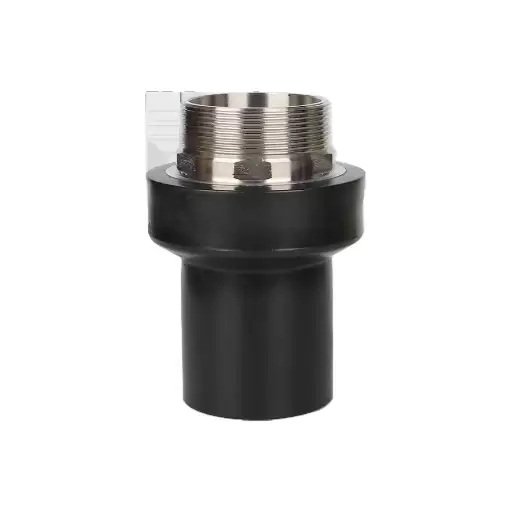
Periodic Inspections
Periodic inspection of HDPE Socket Male Couplers is essential to maintain an environment of integrity, safety, and system longevity. The inspection shall comprise a visual examination to detect signs of wear, including surface cracks, discoloration, or deformation. Attention should be paid to joint connections, as they may become misaligned or mechanically fail upon improper installation or due to excessive stress during the passage of time. The inspection of the seals and O-rings within the coupler will also reveal if they have been degraded due to chemical exposure, UV radiation, or extended use.
Such advanced techniques as ultrasonic testing or hydrostatic pressure tests can be used as supplementary options to visual inspection to spot subsurface defects or weaknesses. Ultrasonic testing is especially good at finding internal cracks or voids inside the material, which may not necessarily be visible from the outside. Hydrostatic pressure testing is a method employed to detect the presence of leaks or areas characterized by reduced structural integrity by simulating working conditions faced by the system. This gives us much justification for incorporating these methods at regular intervals to generate brave data usable for carrying out maintenance and repair actions in a proactive way.
When accounting for its digital aspect-sensor systems recording pressure, flow rate, and temperature, the periodic inspections get upping consideration. With these technologies in place, one could collect data continuously in real time, increasing and allowing superior forecasting of potential issues and decreasing manual effort. System operators use data-driven inspection procedures and operate strictly within recommendations of a manufacturer so as to avoid any possible lapses that create highly expensive operating downtime or catastrophic failure.
Cleaning Techniques
Cleaning systems require effective techniques for operational efficiency and longevity. Different approaches can be used, depending on the application, type of equipment, or contaminants involved. Hydro jetting is extremely popular for pipeline and fluid transport systems. It is used to scour away loose debris, scale, or any other kind of buildup from a system using water at very high pressure, yet without compromising the integrity of the system. Ultrasonic cleaning is also another modern cleaning method that applies high-frequency sound waves within water or solvent-based cleaning solutions to remove unwanted particles from very delicate or intricate components.
Depending on the system, if it is vulnerable to biofouling, cleaning solutions will generally be applied chemically. These solutions are formulated to dissolve or neutralize such deposits while ensuring that the materials will not be adversely affected. Citric acid or derivative-based solutions are used to dissolve iron oxide deposits, whereas alkaline-type cleaners can render organic residues into liquid form. A proper choice of cleaning agent and control over its concentration and reaction time will lead to proper cleaning without infringing on material compatibility.
Modern robots have also been put to use, alongside automated cleaning systems. These can, for example, garner cleaning in areas of tough access while at the same time inflicting human contamination in hazardous environments. Linking sensors and analytics of data will allow accumulating real-time data related to metrics of cleanliness for accuracy and consistency during the cleaning process. More accurately adapted to system needs, cleaning is applied with industry-standard techniques to give better performance, reduced maintenance downtime, and improved reliability in general.
Extending Lifespan of Couplers
Consider the operational life of a coupling as one area in which disfavorable combinations are used in life: an enabling approach must be encompassing of life sciences, application engineering, and maintenance. Thus, the coupling materials selected should be of the highest grades possible; for instance, hardened steel alloys or thermosetting composite polymers exhibiting the best resistance to wear and very high tolerance levels for great mechanical stress. Then, further coatings might be applied to offer protection, such as a decay-proof coating or perhaps one using a frictionless surface.
Engineering optimization through precise machining ensures proper alignment and very minor imbalances during operation, and hence, undue stress. Potential failure detection in early stages is ensured by means of predictive maintenance with advanced condition-monitoring techniques such as vibration monitoring and thermographic imaging. Regular lubrication with motor-specific grease or oil would prevent friction from actually damaging the unit; on the other hand, it also maintains good compatibility with the environment for greater long-term results.
Map onto increasing reliability-tech industries using more machine-learning algorithms for real-time analysis of performance data. These systems monitor such factors as torque, rotational speeds, and temperature changes and respond proactively to make adjustments in an attempt to either minimize or eliminate loads imposed on the couplers. Together with the technical measures, they drastically shorten the repair time, reduce the occurrences of unforeseen failures, and extend the functional life expectancy of coupler systems.
References
Frequently Asked Questions (FAQ)
Q: What is an HDPE Socket Male Coupler?
A: An HDPE Socket Male Coupler is a type of fitting used in piping systems to connect two sections of HDPE (High-Density Polyethylene) pipes. It features a male thread on one end, allowing it to join with other fittings or pipes that have a female thread, ensuring a secure and leak-proof connection.
Q: How does socket fusion work with HDPE fittings?
A: Socket fusion is a method used to join HDPE fittings, including HDPE Socket Male Couplers, by heating the surfaces to be joined until they melt and then pressing them together. This process creates a strong, permanent bond that is resistant to leaks and can withstand high pressures.
Q: What are the advantages of using HDPE pipe fittings?
A: HDPE pipe fittings, such as the HDPE Socket Male Coupler, offer numerous benefits, including high durability, resistance to corrosion, lightweight nature, and flexibility. They are ideal for various applications, including water supply and irrigation, making them a competitive choice in the market.
Q: Can HDPE Socket Male Couplers be used with PVC pipes?
A: HDPE Socket Male Couplers are specifically designed for use with HDPE pipes. While some adapters can connect HDPE and PVC, it is essential to use proper fittings designed for each material to ensure compatibility and maintain the integrity of the system.
Q: What is the difference between a male coupling and a male adaptor in HDPE fittings?
A: A male coupling is a fitting that allows two pipes to be connected end-to-end, while a male adaptor is designed to connect a male-threaded pipe to a female-threaded fitting. Both serve specific purposes in a piping system and are crucial for achieving the desired configuration.
Q: How do I choose the right size for an HDPE Socket Male Coupler?
A: To select the appropriate size for an HDPE Socket Male Coupler, you need to consider the diameter of the pipes you are working with and the pressure ratings of your system. Referencing standards such as EN ISO15494 can help ensure you choose the correct fitting for your application.
Q: Are HDPE fittings suitable for high-pressure applications?
A: Yes, HDPE fittings, including HDPE Socket Male Couplers, are suitable for high-pressure applications, especially those made from PE100 material. They are designed to withstand significant pressure and are commonly used in water supply and industrial systems.
Q: What is the role of compression fittings in HDPE plumbing?
A: Compression fittings are used in HDPE plumbing to create secure connections without the need for welding or socket fusion. They are particularly useful for joining pipes of different materials or sizes, providing versatility in various plumbing installations.
Q: Can I use HDPE Socket Male Couplers in irrigation systems?
A: Yes, HDPE Socket Male Couplers are an excellent choice for irrigation systems due to their durability and resistance to environmental factors. They can effectively handle water flow and pressure, ensuring a reliable irrigation setup.



